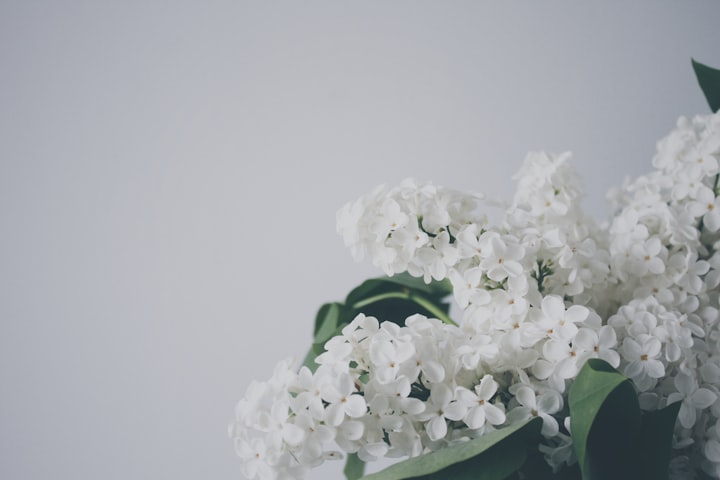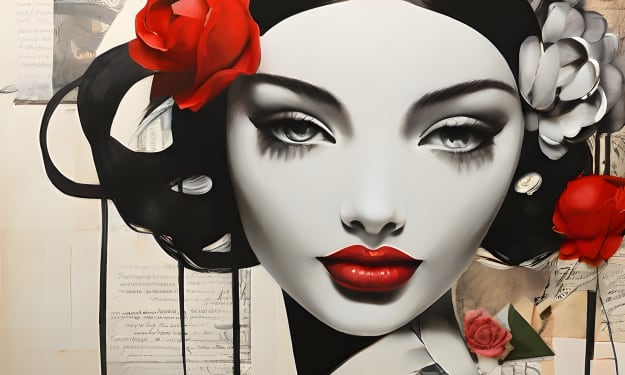Finding MINIMALISM (part 1)
Practicing minimalism helped me reduce waste, and improve my mental health and financial status.

If you show up at my house, you would probably think I am a hoarder, complete opposite of a minimalist! It took me some time to make amends with the fact that minimalism is different for everyone and even though I call myself a practicing minimalist, I am learning as I am evolving. In my defence, besides being a minimalist, I am also an environmentally conscious person. Sometimes I take extensive steps towards repurposing something that would have otherwise be trash! So please excuse my mess while I make a change!
Before I go into the practices that I follow and the reasons behind my minimalism, I wanted to start an open dialogue in Part one of this series to help you decide if you would like to consider minimalism as well.
Ever have a full closet, but feel like you have nothing to wear? Is there stuff in the basement that has been there for years? Ever feel guilty about buying something because you may not use it and it will go to waste? If the answer to any of these questions is 'yes', it might be time to embrace minimalism.
Today's world is full of fast fashion, social media trends, consumerism, and too much information. Trends and technology change fast and we have to keep up with them. The latest version of the iPhone this year becomes old next year. As a result, we often end up with stuff that we do not necessarily need.
Too much stuff may not be good for our mental health either. Studies regarding materialism, such as a paper published in the journal Motivation and Emotion, Knox College Psychology Professor Tim Kasser shows, through a series of experiments done between six months to 12 years, that when people become more materialistic, their emotional well-being subsides.
Having a lot of stuff does not only impact mental health but our finances and the environment as well. Trends push us to buy new shirts for every holiday and occasion that occur throughout the year and much of the fast fashion goes to landfill. What’s the solution to living a life where we don’t deprive ourselves of the trends but don’t end up with a burden of excessive goods either? Adapting minimalism can help us reach that balance.
I was born in Dhaka, Bangladesh. In 2016, my mother informed me that we were moving to the USA. I was given a medium-sized suitcase to pack my belongings and the transition of my migration had started that day. While that empty suitcase was staring at me with its mouth open, I looked around my room, trying to decide what I should take. My bed, my desk, all the books that I have read and have not, the watches I hardly wore, my school pencil box with tacky stickers, the collectibles, stuffed toys, 27 years of belongings, and memories.
Our stuff isn’t just material, they are our identity, a reflection of our personality, our story, and maybe this is why it is so hard to let them go. When I finished packing my suitcase, I felt anxious about forgetting something important but when I crossed the border, I felt a weight off of my chest. I realized I didn’t miss anything, everything I needed to live was in that suitcase and my memories were within me, safely packed. I recognized I did not need much to live. This is where the idea of living with less and adapting minimalism came into the picture for me.
Once I decided to practice minimalism, I realized that I was not just living with less stuff but I was also saving financially and had a clear mind!
Minimalism is interpreted as a form of art, a movement in music and architecture, and a way of life. Looking back at history, minimalism can be found as early as in Buddhism; as Gautama Buddha said, “The less you have, the less you have to worry about.”
In my six-year journey of practicing minimalism, I learned about the environment, mental health, conscious purchase, and conscious waste. Currently, I consider myself a practicing minimalist, and minimalism to me simply means trying to live a simple life.
One might feel overwhelmed about where to start. But everybody’s circumstances are unique. It is up to the individual to decide how far one can stretch in practicing minimalism.
Now, the question is, how we adapt minimalism to our everyday life? “The Minimalists: Less is Now” is a great Netflix documentary to start understanding minimalism. The story focuses on two friends, Joshua Fields Millburn and Ryan Nicodemus, also known as “the Minimalists,” who establish the benefits of a minimalist lifestyle. The documentary guides us through a series of Millburn's and Nicodemus's life events - from growing up in poverty with single parents to chasing the American dream. However, when they accomplished everything they ever dreamed of, both Millburn and Nicodemus only found themselves unsatisfied.
Nicodemus hosted a packing party where he boxed up all of his belongings and took out the items needed in his daily routine. As a result, 80 percent of his things were still boxed up after a month.
After his mother’s passing, Millburn packed away her belongings while realizing she accumulated a lot of stuff over her life. He sold, donated, and gave away most of his mother’s belongings and returned home with a handful of items. In this regard, Millburn said, “this helped me understand that by having fewer sentimental items, we are able to enjoy those sentimental items much more.”
It is inspiring to see them achieve happiness in life by drastically adopting minimalism. However, the documentary can be deceptive as it doesn’t go into the detailed struggles of the process. It is important to remember that even though the minimalists lived a childhood of poverty they were well off before they became minimalists.
Most of us juggle between family, studies, full-time jobs, school activities, and sometimes small businesses as well. Making a drastic shift into minimalism may not be practical in that sense.
However, we can take notes from the documentary and personalize our minimalism. The documentary teaches us that we should keep the things that add value to our lives and let the rest go. When we personalize our minimalistic practice we are not running a rat race, but instead taking baby steps. It is up to us to decide what we can get rid of and when.
Becoming a minimalist, in the beginning, can be overwhelming. It is important to set the intention of why one wants to become a minimalist. The reason to convert could be to create less waste, have a clutter-free life, or save financially. Having an objective helps us focus on the process more and helps us through obstacles. Once we know why we want to pursue minimalism, we are one step closer to it.
If living a well-balanced life is an objective, for example: targeting our bad habits to slowly replace them with something better can help immensely.
Drinking Mountain Dew and a candy bar five days a week can get expensive. After switching to a healthier bar and water, people can save $650 dollars a year, just by quitting this habit! Changing bad habits can also be a process if adopting minimalism is coming from a financial objective like spending less money.
Research says, on average it takes about 66 days to change a habit. It is a difficult job. To help ourselves, targeting habits that are easiest to change should help: one successful switch of bad habits helps us grow confidence in trying the next one. Everyday fast food to occasional fast food, one-time plastics to reusable plastic, restaurant coffee ($4 per cup) to brewing coffee at home (17 cents per cup), and bottled water to a reusable water bottle are all small examples that may seem insignificant but are better alternatives as they save money and reduce environmental waste. Replacing our social media screen time with reading a book or taking a walk not only reduces the daily advertisements targeting us but also advances our mental health. Cleaning our space ritually helps declutter our minds. Making friends with like-minded people who encourage ideas and positivity adds value to our lives. By adding good material and mental habits while getting rid of bad ones, we develop our mindset to advance one step forward toward minimalism.
P.S. This article has previously been published by me in our school newspaper called Schoolcraft Connection. I have customised the article very slightly for my readers here but if you would still like to have a look at the original article, here is the link-https://schoolcraftconnection.com/35423/opinion/practicing-minimalism-part-1/
About the Creator
Homayra Adiba
Homayra Adiba is was born in Dhaka, Bangladesh and currently living in Michigan. As an immigrant, minimalist, minimum wage worker and an artist, she delves into research and art to tell stories of social justice.
https://www.homayraadiba.com






Comments
There are no comments for this story
Be the first to respond and start the conversation.